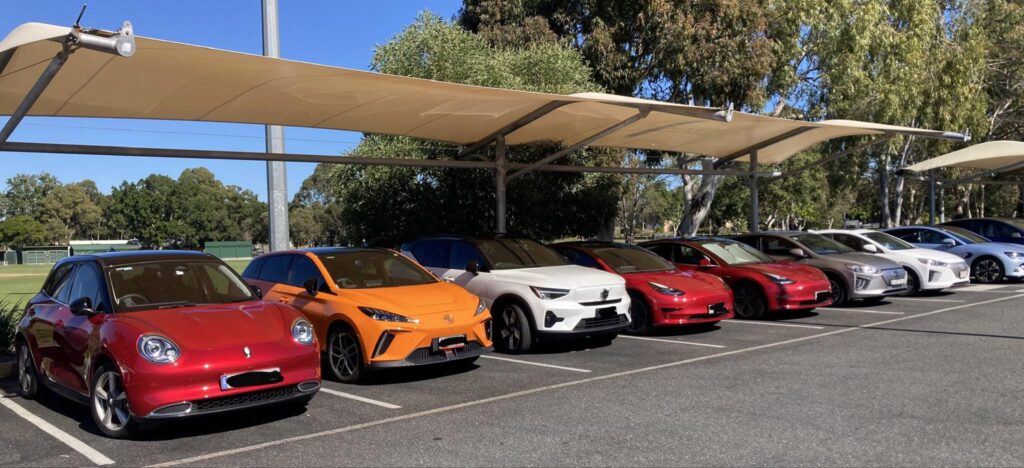In May 2024, Australian electric vehicle (EV) sales experienced a slight uptick, with 8,974 battery electric vehicles (BEVs) sold, marking a notable increase from April’s 6,194 units and even surpassing May 2023’s figures.
However, despite this growth, the overall BEV market penetration remained steady at approximately 8% in a rising market for all vehicles, which saw over 111,000 vehicles sold in total. Mild hybrids led the market in terms of growth.
The Rise of Plug-In Hybrid Electric Vehicles (PHEVs)
A notable trend in the Australian EV market is the increasing availability of plug-in hybrid electric vehicles (PHEVs).
While previously limited to a few models like the Mitsubishi Outlander PHEV, the market now offers PHEV versions from various manufacturers, including Great Wall Motors Haval and Tank.
With at least 18 models listed on zecar and more expected to enter the market this year, PHEVs are gaining traction. May 2024 saw a rise in PHEV sales to 1,373 units, a significant increase compared to the 11,212 plug-in hybrid cars sold in all of 2023.
Despite BEVs currently outselling PHEVs at a rate of 8 to 1, the potential for a shift in consumer preferences exists, especially with buyers looking to avoid fringe benefits tax on new car leases by opting for PHEVs.
Top-Selling BEVs in May 2024
The top-selling BEVs in Australia in May 2024 were:
- Tesla Model 3: 1,958 sold (year-to-date 8,823)
- Tesla Model Y: 1,609 sold (year-to-date 9,610)
- BYD Seal: 1,002 sold (year-to-date 3,306)
- BYD Atto 3: 737 sold (year-to-date 3,366)
- MG4: 565 sold (year-to-date 2,476)
- Volvo EX30: 466 sold
- BMW i4: 198 sold (year-to-date 768+)
- Kia EV6: 181 sold (year-to-date 902)
- BYD Dolphin: 175 sold (year-to-date 1,044)
- Mercedes Benz EQA: 172 sold

Courtesy : Majella Waterworth.

Courtesy : Majella Waterworth

Courtesy : Majella Waterworth
Combining the sales figures for full BEVs and potential electric drivers of PHEVs, the total reaches 10,347, still slightly below the peaks observed in February and March of this year. This suggests a potential for continued growth in the EV market as more models become available and consumer awareness increases.
Traditional vs. Electric: The Podium Shuffle
The Australian automotive market continues to evolve, with the traditional petrol/diesel segment still dominating. In May 2024, the Ford Ranger, Toyota Hilux, and Toyota RAV4 secured the top three spots for sales. However, the electric vehicle (EV) market is experiencing a fascinating transformation, marked by shifting dynamics and emerging contenders.
Tesla, a long-standing leader in the EV space, returned to the top 10 brands sold in May, but its market share has slipped to 40%. This decline can be attributed to the ongoing price war in the EV marketplace, which has seen other manufacturers like BYD gaining ground.
BYD’s Ascent and the Highly Anticipated Seagull
BYD, a Chinese automaker, is rapidly expanding its presence in Australia with a growing portfolio of models. This aggressive strategy is putting pressure on Tesla’s dominance, and the market eagerly awaits the arrival of the competitively priced Seagull (or Dolphin Mini, depending on the outcome of a naming dispute with BMW).
This model, known for its affordability, is expected to disrupt the market and further erode Tesla’s market share. In response, Tesla has implemented significant price cuts, signaling a potential shift towards greater price parity in the EV market.
New Contenders: Leapmotor and Xpeng
The Australian EV market is also set to welcome new players, with Leapmotor and Xpeng expected to launch their vehicles later this year. Leapmotor, in partnership with Stellantis (the parent company of Fiat-Chrysler and Peugeot-Citroen), plans to introduce a small city car (TO3) and an SUV (C10), aiming to compete with established brands like Great Wall, MG, and BYD.
Notably, the Leapmotor TO3 is projected to be half the price of Australia’s current most affordable EV, the GWM Ora, and is similar in size to the Kia Picanto. However, Leapmotor will need to make some upgrades to meet Australia’s stringent safety regulations. Stellantis also has ambitious plans to launch four more models in the Australian market by 2027.
Xpeng is entering the scene with its G6 SUV in the fourth quarter of 2024. With True EV as its distributor, Xpeng is positioning itself as a direct competitor to Tesla, offering a range of EV models tailored to the Australian market.
The G6, built on XPENG’s advanced Smart Electric Platform Architecture (SEPA) 2.0, aims to make a significant impact. True EV’s mission to empower Australians to embrace electric mobility aligns well with the growing interest in EVs across the country.
Optimism for the Future
Despite the current fluctuations in the EV market, there is a sense of optimism about the future. Charging infrastructure is rapidly expanding. New EV models are flooding the market. The Australian EV market will experience exponential growth.
The majority of EVs on Australian roads today have been released in the last 12-18 months, highlighting the rapid pace of innovation and adoption in this sector. As more Australians recognize the benefits of electric mobility, the transition to a cleaner and more sustainable transportation system seems inevitable.